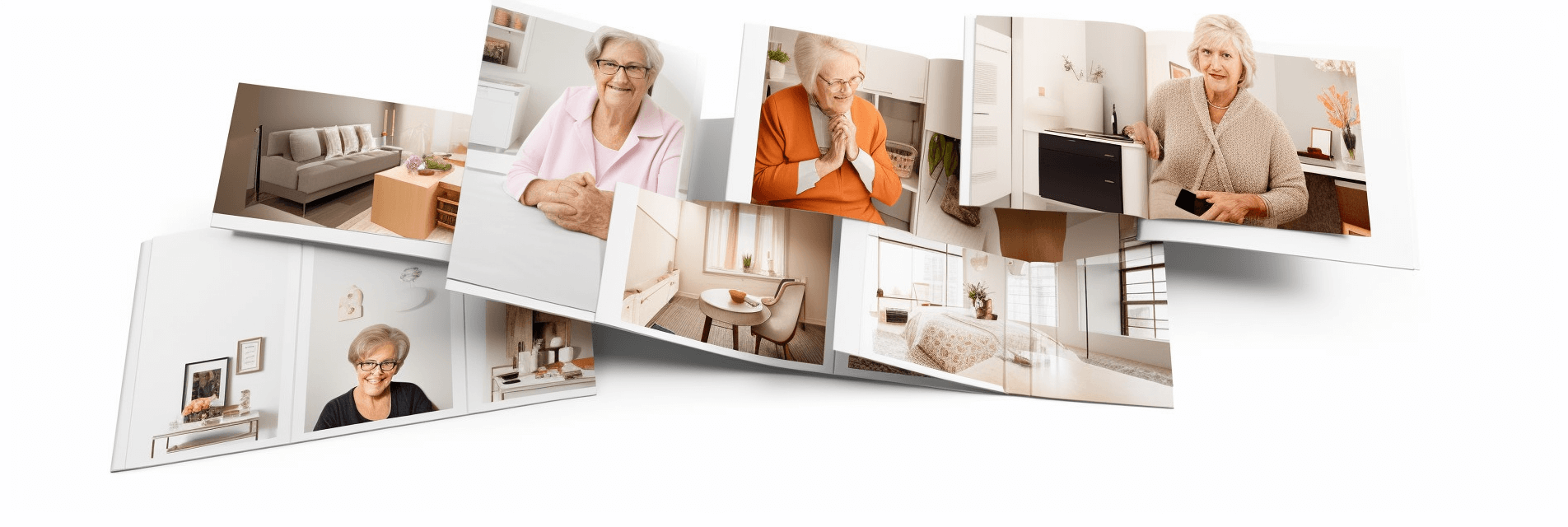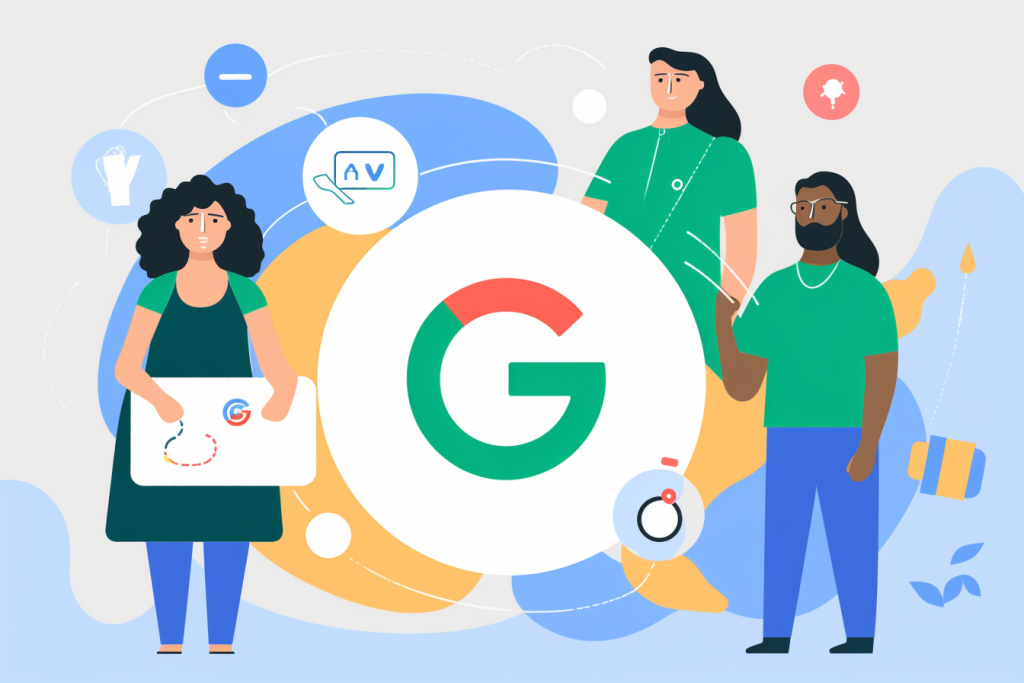As caring individuals who are passionate about helping our seniors, we’re always looking for ways to reach and serve more people in need of our services. One effective method is utilizing Google Ads to its fullest potential. It not only helps us connect with those seeking senior care services but also allows us to make a positive impact on the lives of countless families.
In this article, we’ll share the steps you can take to maximize your Google Ads campaign for senior care services, ensuring that your message reaches the right audience and ultimately making a difference in their lives.

We understand how crucial it is to efficiently allocate resources when providing essential care services. That’s why it’s vital that our marketing efforts are as targeted and effective as possible. By following these guidelines on selecting appropriate keywords, crafting compelling ad copy, optimizing landing pages, and monitoring campaign performance, we’ll ensure that every dollar spent on Google Ads translates into meaningful connections with those who truly need our support.
Let’s dive in and explore how we can enhance our marketing strategy while staying true to our mission of serving others.
Understand Your Target Audience

To effectively reach potential clients, it’s crucial to know who you’re trying to connect with and what matters most to them in seeking senior care services.
Understanding the senior demographics and their specific needs will help us create targeted ad campaigns that resonate with our audience – ultimately leading to higher audience engagement and conversion rates. By focusing on factors such as age, health status, living situation, and financial capabilities, we can tailor our messaging for maximum impact.
To gain insight into our target audience’s preferences and requirements, we must analyze relevant data sources like market research studies, competitor analysis reports, online forums where seniors discuss their concerns or experiences about senior care services.
This information can be invaluable in helping us identify trends within the industry as well as uncovering opportunities to differentiate ourselves from competitors by addressing unmet needs. Additionally, conducting surveys or interviews with existing clients can help us understand their motivations behind choosing our services over others – valuable knowledge that can inform improvements in our offerings.
By continuously refining our understanding of the target audience for senior care services through ongoing research efforts and staying up-to-date on current industry trends, we’ll be better equipped to create engaging Google Ads campaigns that speak directly to what matters most for these individuals.
This approach will not only enable us to maximize marketing ROI but also ensure that we are genuinely serving the best interests of seniors in need of care – fulfilling both our business objectives and the underlying desire for service inherent in all human beings.
Choose the Appropriate Keywords
Well, y’know, picking the perfect keywords is just a walk in the park for boosting those elderly assistance promotions, eh?
One of the most effective keyword research strategies involves understanding and prioritizing our target audience’s needs. We must analyze search trends and identify popular words or phrases that potential clients use when searching for senior care services. This could include terms like ‘home care,’ ‘elderly support,’ or ‘senior assistance.’
Moreover, we can’t underestimate the importance of negative keywords as they help filter out irrelevant searches and save on our advertising budget.
Now that we’ve got our main keywords sorted out, it’s time to diversify by creating long-tail variations of those seed keywords. Long-tail keywords are more specific phrases with lower search volumes but often result in higher conversion rates since they address particular needs.
For instance, if one of our primary keywords is ‘senior home care,’ we might consider long-tail variations such as ‘in-home dementia care’ or ‘overnight senior respite care.’ By doing so, we can effectively reach more niche markets within the broader scope of elderly assistance services.
As we refine our keyword selection process, it’s crucial to keep an eye on performance metrics and adjust accordingly. Regular monitoring of click-through rates (CTRs), cost-per-click (CPC), and conversion rates will provide valuable insights into which keywords drive desired results and which ones may require tweaking or removal altogether.
Remember that refining your keyword strategy is an ongoing process – staying agile and adaptive ensures that our Google Ads campaigns continue to resonate with those who genuinely need senior care services while maximizing return on investment (ROI). So let’s get out there and make a difference in people’s lives through effective online advertising!
Craft Captivating Ad Copy

Crafting captivating ad copy is like painting a vivid picture with words, enticing potential clients to explore the world of elderly assistance we offer. To achieve this, we need to create engaging headlines that instantly grab attention and use emotional triggers that resonate with our audience.
With the right combination of persuasive language and sincere messaging, our Google Ads can effectively generate interest in our senior care services and ultimately lead to more conversions. To make our ad copy compelling and relatable, consider incorporating these elements:
- Highlight key benefits: Focus on the unique advantages of our senior care services and how they improve the quality of life for seniors.
- Use clear, concise language: Avoid jargon or complex terms; instead, opt for simple phrases that are easy to understand by all readers.
- Incorporate social proof: Include testimonials or reviews from satisfied clients as a way of building trust in your brand.
- Create urgency: Offer limited-time promotions or incentives to encourage prospective clients to take immediate action.
- Address common objections: Anticipate concerns about cost, commitment, or effectiveness and tackle them head-on within your ad copy.
By putting ourselves in the shoes of potential clients seeking senior care services for their loved ones, we can better tailor our ad copy to address their needs and show empathy towards their situation. This will help us establish an emotional connection with them, which is a powerful motivator when it comes to making decisions about healthcare providers.
Remember that every word counts – from the headlines down to the call-to-action – so don’t hesitate to revise and refine your ads until they’re nothing short of perfect. As we continue optimizing our Google Ads for senior care services, always keep in mind that crafting compelling ad copy is an ongoing process requiring constant refinement based on data-driven insights.
By consistently analyzing performance metrics such as click-through rates (CTR) and conversion rates (CVR), coupled with A/B testing different variations of headlines, descriptions, and calls-to-action, we can ensure that our ads resonate with potential clients and effectively communicate the value of our senior care services.
Through this iterative approach, we will undoubtedly maximize the results from our Google Ads campaigns and help more seniors receive the assistance and support they deserve.
Optimize Your Landing Pages
Ensuring mobile-friendliness is crucial for optimizing our landing pages, as a significant portion of our target audience accesses our senior care services through smartphones and tablets.
Streamlining the user experience on these devices not only caters to this demographic, but also helps improve our Google Ads performance. This is achieved by increasing overall satisfaction and conversions.
Focusing on responsive design elements, fast page load times, and easy-to-use navigation menus can effectively cater to both desktop and mobile users. This, in turn, maximizes the return on our advertising investments.
Ensuring mobile-friendliness
Ironically, you’d think everyone’s on board with mobile-friendliness by now, but it’s still a must-do for reaching seniors in need of care.
Mobile optimization is essential because more and more seniors are using smartphones and tablets to search for senior care services online. Ensuring that your Google Ads direct users to mobile-friendly landing pages will not only provide a seamless experience for potential clients but also improve your ad quality score, which can lead to lower costs per click and better ad placements.
Responsive design plays a crucial role in creating an excellent user experience across various devices; therefore, we must prioritize this aspect when designing our landing pages. By utilizing responsive design techniques, we ensure that our website adjusts smoothly to different screen sizes and orientations without sacrificing functionality or aesthetics.
This way, we cater to the diverse range of devices used by seniors today while demonstrating our commitment to providing accessible services for those in need of assistance. Ultimately, focusing on mobile-friendliness will help us effectively reach seniors searching for care services through Google Ads and genuinely connect with them as they navigate their options.
Streamlining the user experience
You’ve gotta focus on streamlining the user experience, making it as effortless and enjoyable as possible for seniors exploring your website. This is crucial in maximizing Google ads for senior care services, as a well-designed website can increase conversions and make the most of your ad spend.
Begin by developing user personas that represent your target audience – consider their needs, preferences, and potential challenges when navigating online. Then, set up conversion tracking to monitor how users interact with your site and identify areas for improvement.
To ensure an engaging and intuitive user experience on your senior care services website:
- Focus on clear navigation menus that are easy to read and use, and accessible font sizes and colors for seniors with varying levels of vision.
- Prioritize quick load times to prevent visitors from becoming impatient or frustrated, and responsive design that adapts seamlessly across different devices.
By streamlining the user experience in this manner, you’ll create a welcoming space where seniors feel confident exploring their options for care services. This not only increases the likelihood of converting visitors into clients, but also demonstrates your commitment to serving others – a quality that will resonate with those who seek compassionate care providers.
Monitor and Analyse Your Campaign Performance

Keep a keen eye on your campaign’s progress and dive into the nitty-gritty of its performance to make it truly shine for those golden years’ assistance providers. Monitoring and analyzing your Google Ads campaign is crucial in staying ahead of the competition and ensuring that you’re reaching the right audience with the most effective messaging.
By regularly reviewing performance metrics, we can identify trends or issues in our campaigns, allowing us to make informed decisions about which aspects to focus on improving next. One way to stay organized and knowledgeable throughout this process is by setting up custom reports within your Google Ads account.
These reports can be tailored to include only the most relevant data related to senior care services, such as keywords, ad groups, age demographics, geographic locations, device usage, and more. As we gather information from these reports over time, it becomes easier to spot patterns or areas where our ads may be underperforming or generating unnecessary costs.
This invaluable insight enables us to make timely campaign adjustments that can significantly improve overall success. As passionate advocates for serving others in their time of need, we must strive always to create engaging content that resonates with our audience while optimizing every aspect of our campaigns for maximum efficiency.
Continually monitoring and analyzing our ad performance ensures that we remain nimble in an ever-changing digital landscape and maintain a strong connection with those seeking quality senior care services. So let’s commit ourselves wholeheartedly: delve deep into those performance metrics and uncover actionable insights that will propel our senior care campaigns forward – because every improvement we make ultimately contributes towards a better quality of life for seniors who rely on our services.
Frequently Asked Questions
What is the ideal budget to allocate for Google Ads in the senior care services industry?
When determining the ideal budget allocation for Google Ads in the senior care industry, it’s crucial to analyze factors such as competition, target audience, and geographical location.
We recommend starting with a modest budget and closely monitoring your campaign’s performance to identify areas for improvement. By continuously refining our ad targeting and bidding strategies, we can ultimately maximize return on investment while fulfilling our innate desire to serve others in need of quality senior care services.
Remember, it’s not solely about the amount spent; it’s about strategically allocating resources to reach potential clients who truly value compassionate and professional senior care solutions.
How can I make sure my Google Ads comply with HIPAA regulations and respect user privacy?
Navigating the world of HIPAA compliance can feel like walking on eggshells, but don’t worry, we’ve got you covered with some key tips and privacy-focused strategies.
First and foremost, keep your ad content free from any protected health information (PHI) to avoid violating HIPAA regulations.
Always be cautious when using remarketing lists or targeting specific demographics, as this could unintentionally reveal sensitive data about potential clients.
Lastly, consider working with a trusted digital marketing agency that specializes in healthcare advertising. This will ensure you’re not only reaching your target audience effectively but also staying within legal boundaries.
By following these guidelines and keeping user privacy at the forefront of your efforts, you’ll not only maintain compliance but also serve your community with care and compassion.
How can I effectively target seniors who are not tech-savvy or do not frequently use the internet?
To effectively reach seniors who may not be tech-savvy or frequent internet users, it’s crucial to understand senior demographics and prioritize tech accessibility.
By analyzing data on age groups, living situations, and common interests among seniors, we can pinpoint areas where they’re more likely to be engaged.
Additionally, focusing on making technology easily accessible helps bridge the gap for those with limited experience or physical limitations.
This approach allows us to connect with a wider audience while catering to their individual needs, ultimately fulfilling our desire to serve others in a meaningful way.
Are there specific Google Ads features or tools that are particularly beneficial for senior care service providers?
As we study the senior demographics and strive to enhance ad accessibility, we recognize the significance of employing specific Google Ads features tailored to senior care service providers.
By leveraging tools such as affinity audience targeting, location targeting, and dayparting, we can effectively reach seniors who may not be tech-savvy or frequent internet users. These strategies enable us to cater advertisements that resonate with their unique needs and preferences while ensuring they’re easily accessible when they do venture online.
Our analytical approach allows us to continuously optimize campaigns for improved performance, ultimately helping fulfill our innate desire to serve others better in their time of need.
How can I incorporate offline marketing efforts, such as print ads and community events, with my online Google Ads campaign to maximize reach and engagement, eh?
Incorporating offline marketing efforts with our online Google Ads campaign can be highly effective, as it enables us to create a seamless experience for our target audience. By leveraging Offline Integration and Event Promotion, we can connect our print ads and community events with our digital campaigns, offering a consistent message across all channels.
This approach not only expands our reach but also fosters deeper engagement with potential clients who share a passion for serving others. Through careful planning and coordination of both online and offline initiatives, we can maximize the impact of our marketing efforts while reinforcing our commitment to providing exceptional senior care services.
Conclusion
In conclusion, we’ve seen that maximizing Google Ads for senior care services is essential to reach our target audience effectively. By understanding our audience, selecting the right keywords, and crafting compelling ad copy, we can significantly improve our campaign performance.
Optimizing landing pages is also crucial to achieving success in this industry. Interestingly, studies show that 75% of users never scroll past the first page of search results. This highlights the importance of a well-optimized Google Ads campaign in order to stay competitive.
To sum up, a well-executed Google Ads campaign is a powerful tool for senior care services to connect with potential clients. By taking the time to understand our audience and optimizing our campaign, we can increase our visibility and ultimately grow our business.



